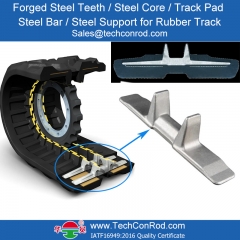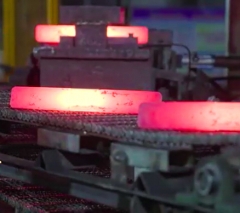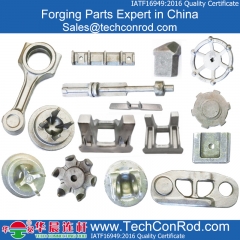 +86-151 9217 7108
+86-151 9217 7108
 +86-151 9217 7108
+86-151 9217 7108

High quality steel Die Forging parts with material 40Cr 42CrMo and C70S6
read more
High quality steel Die Forging parts with material 40Cr 42CrMo and C70S6
read more
High quality steel forging parts with material 40Cr 42CrMo and C70S6
read more
OEM high performance steel forging parts at China price.
read moreTechnological process of forging manufacturing
IATF16949:2016 certified forging manufacturer
The preparation of forgings before forging includes the selection of raw materials, calculation of materials, blanking, heating, calculation of deformation force, selection of equipment, and design of molds. Lubrication method and lubricant shall be selected before forging.
Forging materials cover a wide range, including steel and superalloys of various brands, as well as non-ferrous metals such as aluminum, magnesium, titanium, copper, etc; There are not only bars and sections of different sizes processed at one time, but also ingots of various specifications; In addition to a large number of domestic materials suitable for China's resources, there are also materials from abroad. Most of the forging materials have been listed in national standards, and many of them are new materials developed, tried and popularized. As we all know, the quality of forging products is often closely related to the quality of raw materials. Therefore, workers in forging factories must have the necessary material knowledge and be good at selecting appropriate materials according to the process requirements.
Calculation and blanking is one of the important links to improve the utilization rate of forging materials and realize the refinement of blanks. Excessive materials not only cause waste, but also aggravate the wear of the die bore and energy consumption. If there is no allowance for blanking, it will increase the difficulty of process adjustment and increase the scrap rate. In addition, the quality of blanking end face also affects the process and the quality of forgings.
The purpose of heating is to reduce forging deformation force and improve metal plasticity. But heating also brings a series of problems, such as oxidation, decarbonization, overheating and overburning. Accurate control of initial and final forging temperatures has a great impact on the structure and properties of products.
Flame furnace heating has the advantages of low cost and strong applicability, but the heating time is long, it is easy to produce oxidation and decarbonization, and the working conditions also need to be continuously improved. Electric induction heating has the advantages of rapid heating and less oxidation, but it has poor adaptability to the changes of product shape, size and material.
Forging forming is produced under the action of external force. Therefore, the correct calculation of deformation force is the basis for selecting equipment and checking dies. The analysis of stress and strain in the deformed body is also indispensable to optimize the process and control the microstructure and properties of forgings.
 online
online 0086-635-4560298
0086-635-4560298 0086-635-4560298
0086-635-4560298 info@techconrod.com
info@techconrod.com +86-151 9217 7108
+86-151 9217 7108